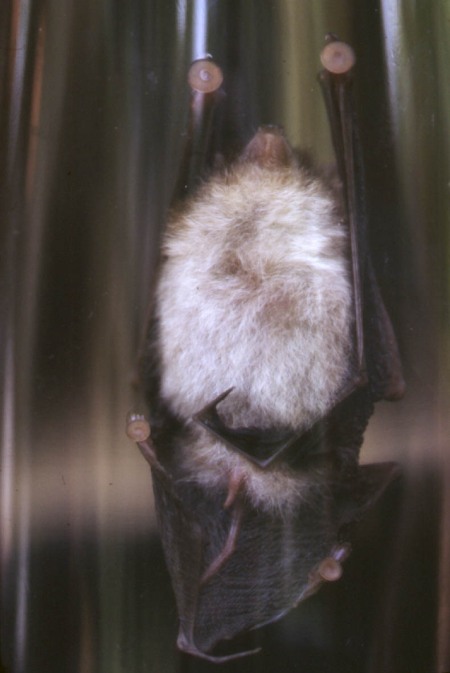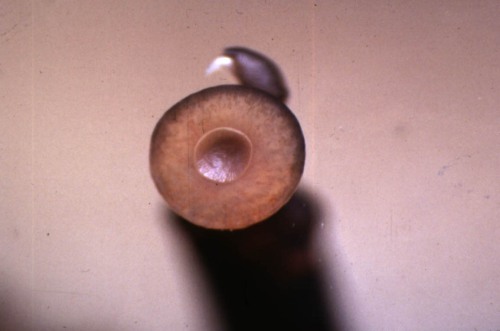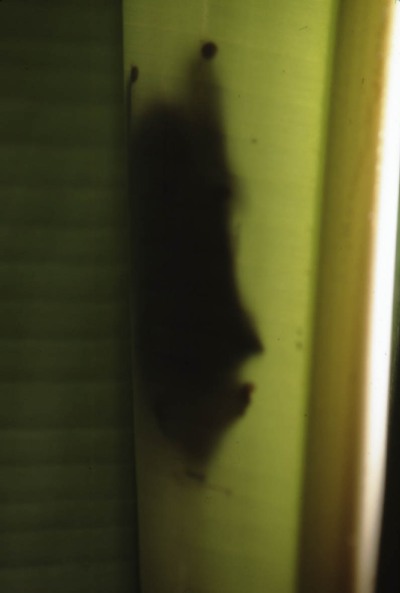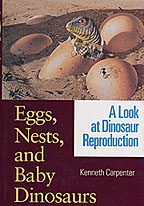
Spix’s Disk-Winged Bat (Thyroptera tricolor). Courtesy of Dr. Brock Fenton
When I was 10 or 11 years old, I made a terrible mistake. Pondering the 2 and 1/2 inch wide suction cup that held my plastic basketball hoop to the back of my door, I wondered if it would stick should I apply it to my forehead. The experiment was a success, the suction cup proving somewhat difficult to remove, but I only learned of my folly when my mother asked what in the world had happened to my head. I lied, concocting an elaborate story about how I had tripped and fell, my forehead landing on the upturned cup, but my mother immediately recognized the fib and I told the truth. This did not save me from being called “Hickey-Head” for the next week of school, and I duly learned my lesson.
While the science of suction give me an embarrassing purple mark, evolution has crafted suction cups far more sophisticated than those found on shower caddies or the tips of Nerf guns. Cehalopods are perhaps the most well-known bearers of suckers, but mammals are no slouches either. When Spix’s Disk-winged Bat (Thyroptera tricolor) goes to sleep, it doesn’t hang upside down by its toes like other bats; it clings to the inside of a curled leaf using four suction-disks attached to its wrists and ankles!

Spix’s Disk-Winged Bat roosting. Note the suction disks on the wrists and ankles. Courtesy of Dr. Brock Fenton.
So how does this work, exactly? The roosting behavior of these bats has been known for some time (they were discovered in 1823), only recently have we gained insight into how these critters manage to hang on while they sleep. In 2001, Daniel K. Riskin and M. Brock Fenton published “Sticking ability in Spix’s disk-winged bat, Thyroptera tricolor (Microchiroptera:Thyropteridae)” in the Canadian Journal of Zoology, running various trials with Spix’s bats and other species lacking suction disks, recording how effective they were at roosting on medium-grade sandpaper, Lexan polycarbonate, solid sheet aluminum, and porous sheet aluminum. The results? In 584 trials Spix’s bats always did well on smooth surfaces (which are akin to the smooth leaf surfaces they normally roost upon), and with one exception always did poorly on rough surfaces that gave other species no problem. That confirmed what had been observed in the wild, but how do their suction disks actually work?

The suction disk of Spix’s Disk-Winged Bat. Courtesy of Dr. Brock Fenton.
In the course of their research, Risken and Fenton found that the Spix’s bats adhere to their roosts primarily through suction and sometimes through wet adhesion. While you might be thinking “Well duh, it looks just like a suction cup,” there are lots of different ways to adhere to surfaces, be it gluing to a surface by use of a sticky substance, using suction, or some other method. The problem that Spix’s bats face, however, is that they seem to lack the ability to “lock” their tendons in place like some other bats, and because a tendon attached to a muscle controls the suction disk shape (allowing them to stick and un-stick when needed), they would need to constantly use their muscles to make sure they don’t slip off during sleep. The bats, however, have been adapted to use wet adhesion, where a thin layer of liquid sits between the disk and the surface, and probably allows the bats to increase their hold on their roost without the extra muscle efforts, saving them a good deal of energy (and being much more comfortable, too). The only major disadvantage this setup seems to cause the bats, however, is that they can’t use their thumbs to climb rough surfaces as other bats, and given the favored roosting sites of Spix’s bats, the need to use their thumbs to climb on rough surfaces might come into play more than we realize.
As has already been discussed, Spix’s bats require a smooth surface to roost upon, their suction disks being ineffective on rough or overly porous surfaces. They are most often found in the rolled-up leaves of plants along the bats’ range from Mexico to Brazil and belonging to the genera Heliconia and Calathea, both of which provide the bats with a comfortable tube to sleep in. This strategy is not without its drawbacks, however, as Heliconia and Calathea plants “unfurl” their leaves as they develop, evicting whatever bats might be using it for a home. The average time that these leaves are suitable for occupation is one day (Vonhof 2004). There do seem to be many more suitable roosting sites than plants actually used by the bats, but even so the bats are dependent on the availability of the tube-like leaves. If the bats can not find a suitable plant or flat surface to roost upon, they may be forced to use their somewhat-disabled thumb claws to find a new roost, but given how inefficient these bats are at dealing with rough surfaces I can’t imagine that there are many suitable substitutes for them.

Spix’s Disk-Winged Bat roosting inside a leaf. Courtesy of Dr. Brock Fenton.
While roosts are available, however, it is not one bat to a plant. In their 2004 study, Vonhof, Whitehead, and Fenton found that the bats formed social groups of four to fourteen members of both sexes, social groups rarely associated (i.e. shared the same roost at the same time) with members of other social groups despite that fact that the home ranges (where the animal goes during the course of the average day) overlapped each other. This ran counter to what the researchers had expected; given that the roosts only lasted for such a short time (and hence there’d be no point in defending a site as a group) and there appeared to be an abundance of roost sites, why would the bats choose to stay together in social groups? They eat insects, so they probably aren’t sharing food, and what benefit they may receive from staying together is unknown to us. The study does note, however, that the ecology of the area they studied in Costa Rica may be in flux, reductions in roost sites common enough that the bats don’t respond behaviorally when more sites are available to them. In other words, they are so used to hunkering down together to roost that they don’t seem to notice when more plants are available to them, and the surge in roost sites is not indefinite to any behavior changes do not become fixed.
It should also be noted that in Costa Rica, the bats seem to share their roosts with more than just other members of the same species. A new species of fly dubbed Sarcofahrtiopsis thyropteronthos (Pape 2002) was described as being found in almost all roosts used by the bats, although I do not have access to the paper and little information seems to be available on the insect or what it might be doing.
Still, Spix’s bat is a far cry from the little brown bats that I’m more familiar with here in New Jersey, but they are not the only bats with such discs; Peter’s Disk-Winged Bat (Thyroptera discifera) of Central/South America and bats belonging to the group Myzopodidae (like Myzopoda aurita and Myzopoda schliemanni) from Madagascar. How these sucker structures evolved in the first place is a puzzle that will need more attention, as I could find almost nothing on how these animals came to become adapted in such an astounding manner. The unity and diversity of life never ceases to amaze me, and these wonderful bats are another example of wonders we may lose if we continue to be careless with this planet.
References:
Digimorph- Thyroptera tricolor
Pape, Thomas; Dechmann, Dina; Vonhof, Maarten J. 2002. A new species of Sarcofahrtiopsis Hall (Diptera: Sarcophagidae) living in roosts of Spix’s disk-winged bat Thyroptera tricolor Spix (Chiroptera) in Costa Rica. Journal of Natural History, Volume 36, Issue 8 June 2002 , pages 991 – 998
Risken, D.K., Fenton, M.B. 2001. Sticking Ability in Spix’s Disk-Winged Bat, Thyroptera tricolor [Microchiroptera: Thyropteridae, Canadian Journal of Zoology
Vonhof, M.J., Whitehead, H., Fenton, M.B. 2004. Analysis of Spix’s disc-winged bat association patterns and roosting home ranges reveal a novel social structure among bats. ANIMAL BEHAVIOUR, 2004, 68, 507e521
All photos courtesy of Dr. Brock Fenton. Do not use without permission.














[…] The Sucker-Disk Bats of Costa Rica Brian Switek When I was 10 or 11 years old, I made a terrible mistake. Pondering the 2 and 1/2 inch wide suction cup that held my plastic basketball hoop to the back of my door, I wondered if it would stick should I apply it to my forehead. The experiment was a success, the suction cup proving somewhat difficult to remove, but I only learned of my folly when my mother asked what in the world had happened to my head. I lied, concocting an elaborate story about how I had tripped and fell, my forehead landing on the upturned cup, but my mother immediately recognized the fib and I told the truth. This did not save me from being called “Hickey-Head” for the next week of school, and I duly learned my lesson. Continued on Page 22 […]
Ick. Like they were convergent on squids or something…
Seems to be designed to live in terraria! 🙂
This is so awesome. I thoroughly enjoyed reading this post. I never even knew these bats existed.
I have been examinating out many of your posts and i can claim pretty nice stuff. I will surely bookmark your site.